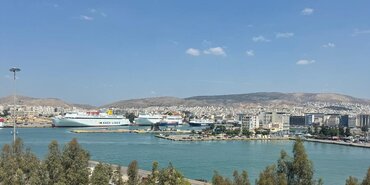Submarine cables and risk management
By Chris Sturgeon of Red Penguin http://www.redpenguinltd.com/
Effective risk management of construction projects at sea requires, in particular, a fundamental understanding of the necessary elements that combine to achieve thorough planning, preparation and delivery. Thus attention to detail; knowing the questions to ask and understanding the value of the answers received, is key to understanding and managing risk throughout the project lifecycle.
The multidisciplinary team necessary to deliver large projects consists of specialists and experts capable of directing and efficiently communicating advice and recommendations to senior management to enable them to make informed decisions, thereby significantly increasing the likelihood of achieving project delivery safely, on time, on budget, free of damage or latent defect and meeting the desired specification for handover to the operations team.
Maintaining an informed engineering perspective from the feasibility stage, and carrying on through the planning, design survey and consenting processes facilitates subsequent engineering. Contract management, ideally through a collaborative and participatory process, is the primary tool for the system owner or developer to influence the performance of the contractor. Consequently the construction and wording of the contract is fundamental to the ability of the client to monitor the contractor’s performance and so to identify risk.
The installation and maintenance of submarine cables is a complex and complicated business and the insurance market is all too aware of the cost of claims associated with power cables. Red Penguin’s team have been immersed in the submarine cable installation and repair industry for many years and their experience spans some significant developments in the industry; the transition of the telecommunications industry from coaxial to fibre optic cable, the development of control umbilical and electrical connections in oil and gas fields and the increase in recent years of HVAC and HVDC power cables in both domestic and international grids and increasingly in the offshore renewable energy industry.
Improvements in navigational positioning both above and below water, increased development and application of remote vehicle operations, improved ship design and the application of dynamic positioning systems on vessels together with the development of a range of cable handling and control systems have also taken place allowing wider application for ships of opportunity. Advances in surveying and geotechnical systems, the use of GIS and other data management systems have increased the capacity for managing information; an important factor when dealing with the increased importance of environmental impact and mitigation of negative influences. Hand in hand with these has been the development of quality and safety management systems and the encompassing regulatory and verification framework.
Demonstrating to an insurer that risk management can be achieved by close attention to detail at an early stage of a project is likely to build confidence in the Client’s ability to manage risk through the development of a coherent and well substantiated approach.
Understanding the interaction between all the associated parts of a project, in particular the attention to detailed planning of a submarine cable installation is crucial to being able to appropriately de-risk these complex activities.
Marine operations require an open mind to address the challenges of projects whether in the Mediterranean, the North Sea or the Southern Ocean. The sea has always commanded the respect of those who seek to profit from its omni-presence with failure to attend to the smallest details often resulting in disruption of the adventure.
- Date
- 08/03/2012





